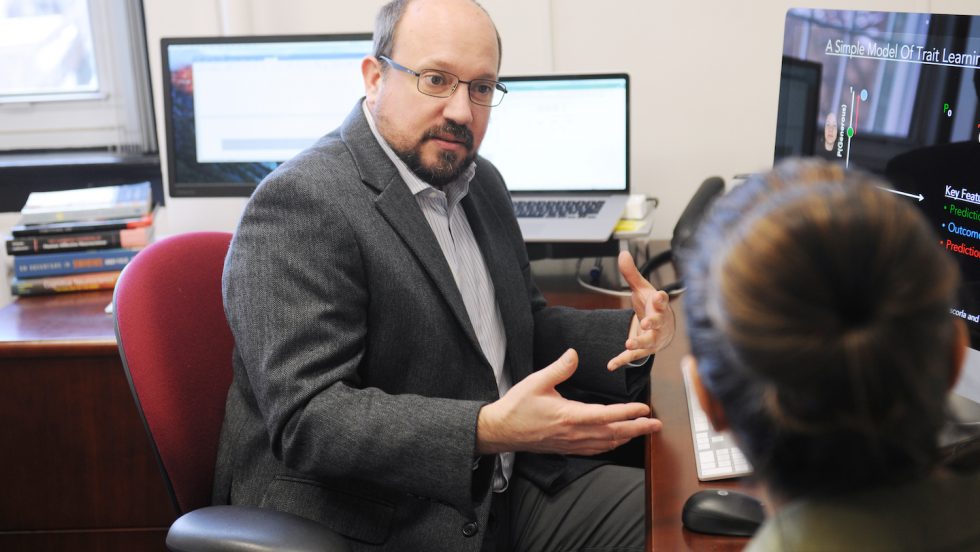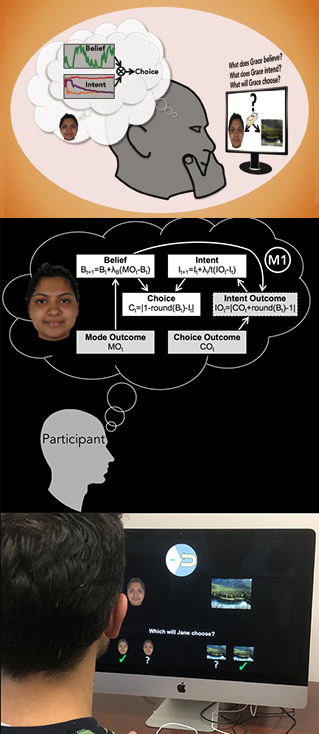
Damian A. Stanley, PhD, has written several articles on implicit race bias and social neuroscience. His other research interests and specializations include social learning and decision-making and functional MRI, which measures brain activity.
Long before they head off to kindergarten, most children have begun to develop what is known as theory of mind: the ability to grasp that other people have thoughts and feelings different from their own.
The classic test involves asking a child what they will find inside a box marked Band-Aids. When they answer “Band-Aids,” the box is opened to reveal crayons. If they are asked what the next person to enter the room will think is inside the box, children under four often say “crayons.” That’s because without theory of mind, they assume that others have the same knowledge as they do.
Individuals on the autism spectrum may also have difficulty comprehending what others are thinking and feeling. To help understand why, Damian Stanley, PhD, assistant professor of psychology at Adelphi University’s Gordon F. Derner School of Psychology, designed a more sophisticated test utilizing computational models to measure theory of mind impairment in adults with autism.
Dr. Stanley, who spends the summer in Pasadena as a visiting professor at the California Institute of Technology (Caltech), has long been interested in learning and decision-making. Working at Caltech gave him access to studying a population of high-functioning people with autism.
“My research is not focused on autism per se,” said Dr. Stanley. “Rather, it makes use of populations with specific impairments so that we can understand how these processes are implemented in the brain and how things can go wrong. When we understand how things go wrong, we can understand how they go right.”

Illustration of the things test participants (mentalizers) had to keep in mind (top), as well as the questions they had to answer (middle) and the mathematical models that represented their thought processes (bottom).
The goal, notes Dr. Stanley, was to develop a computational model of the specific calculations the brain makes when learning about other people. His test first asked participants to play a game in which they could donate money to one of three charities or keep it for themselves. But they had to pay close attention, because sometimes the game carried out their instructions to donate or keep money, and sometimes it did the reverse for several rounds.
Next, the participants watched a woman named Grace play the same game. They had to track whether she believed the game was functioning normally or in reverse. They also had to learn which charities she wanted to receive her donations and which she did not. Critically, to correctly interpret Grace’s choices and therefore learn, participants had to take into account her beliefs about whether her decisions were being reversed—that is, if she chose to donate to a charity, they had to know whether she believed the money would end up with the charity (normal) or remain with her (reversed) in order to correctly understand her motivation.
“In other tests about theory of mind, you get all the information up front,” said Dr. Stanley. “But in reality, we learn more and more about people over time. This test is a more nuanced reflection of the real world.”
The data collected from two groups—one with members on the autism spectrum, and a control group with members who are not—was analyzed with computational modeling. Researchers found that members of the control group were able to track the woman’s beliefs, as well as use that knowledge to correctly interpret her choices and learn which charities she preferred. The group with members on the spectrum were also able to track the woman’s beliefs; however, they struggled to use that information to learn which charities she preferred and predict her behavior.
Curiously, not every participant on the spectrum seemed to struggle in the same way. While the current study is too small to distinguish between the different groups, Dr. Stanley explains, it provides a road map for future research. “The power of using computational models is that we’ll be able to break it down into separate pieces,” he said. “Some people with autism might be impaired at one part of the process, some at the other.”
The results are documented in “Deconstructing Theory-of-Mind Impairment in High-Functioning Adults with Autism,” published in the February 4, 2019, issue of Current Biology. Besides Adelphi, the team included researchers from Caltech and the University of Toronto at Scarborough.
Adelphi students are benefiting from the University’s close connections to institutions conducting groundbreaking research. Dr. Stanley mentioned a new collaboration with the City University of New York’s Advanced Science Research Center designed to collect brain imaging data.
“We provide our students with a more rigorous approach to understanding links between the brain and behavior,” said Dr. Stanley. “They are thinking about things in grays rather than black and white, and that’s certainly where we are headed in science.”
For further information, please contact:
Todd Wilson
Strategic Communications Director
p – 516.237.8634
e – twilson@adelphi.edu